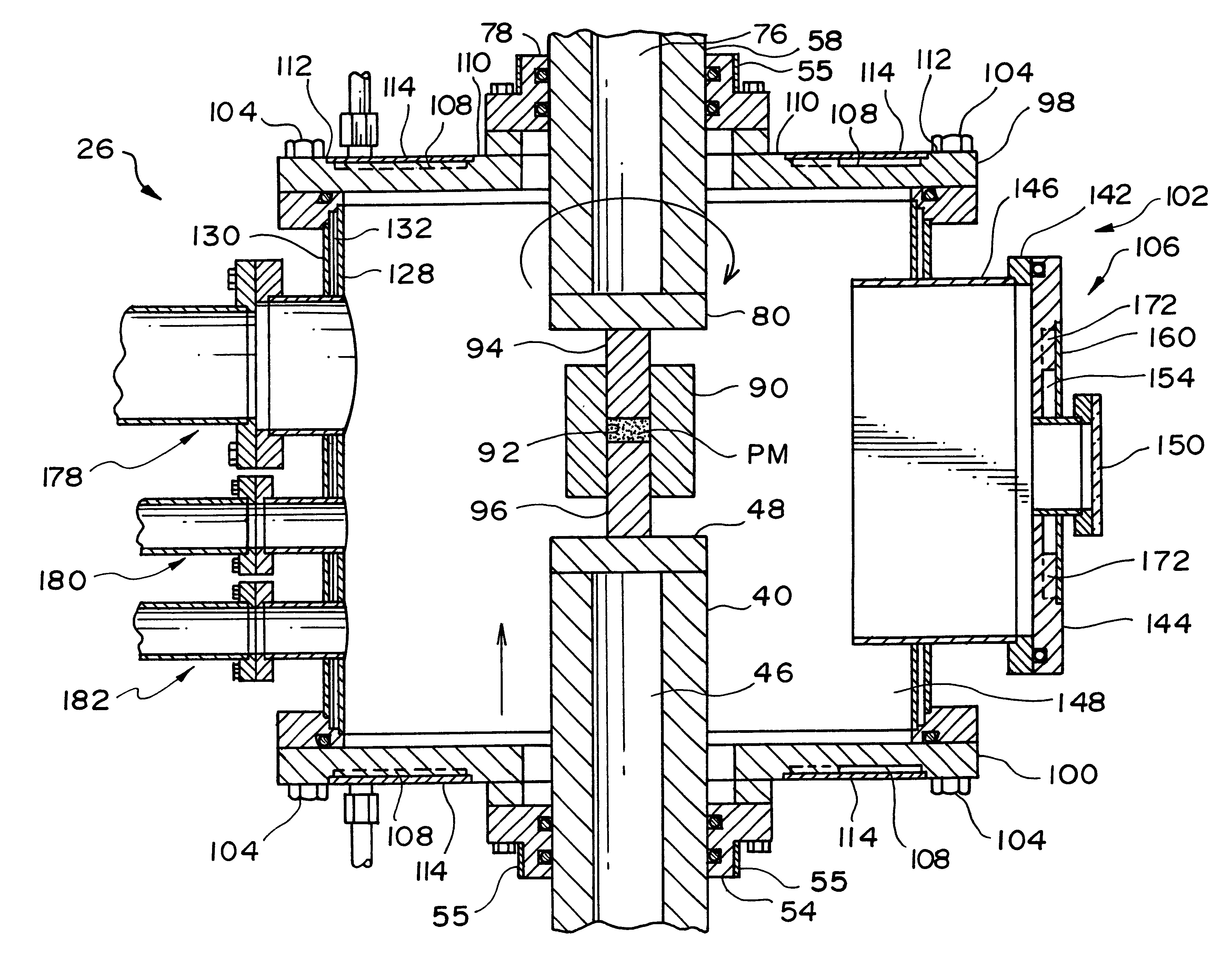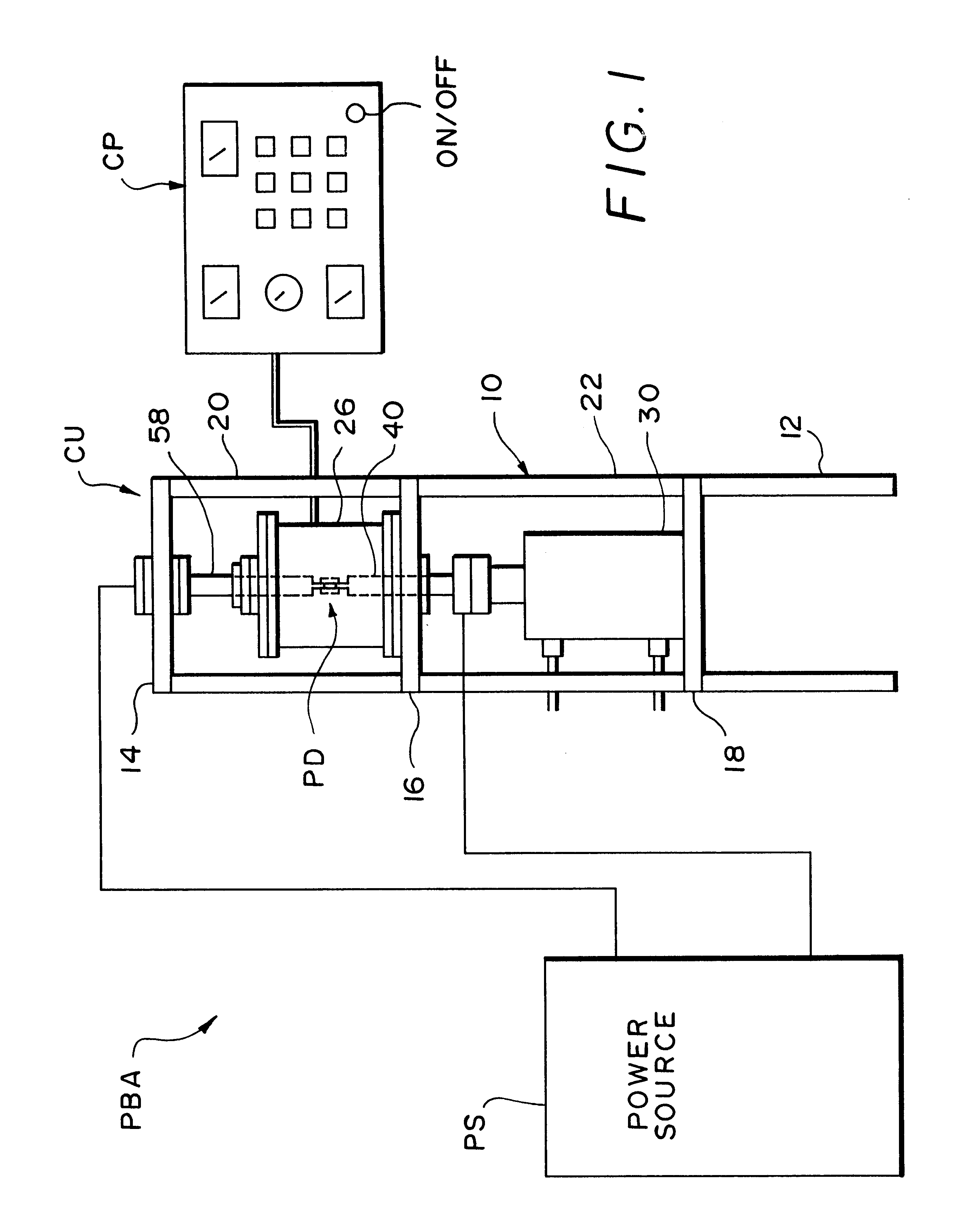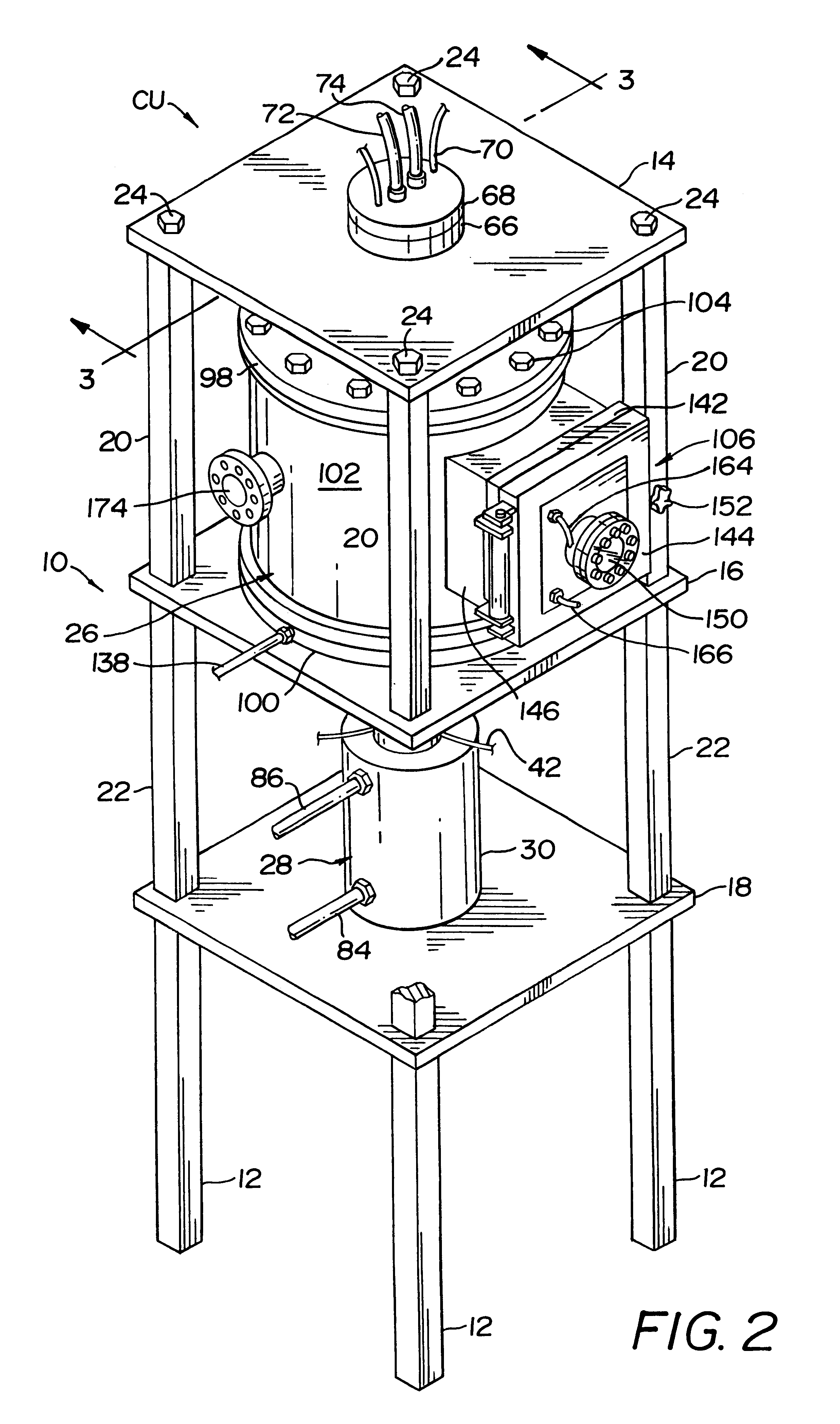Apparatus for bonding a particle material to near theoretical density
a particle material and fast bonding technology, applied in heat treatment apparatus, furnaces, furnaces, etc., can solve the problems of limiting the final density that can be achieved, significantly affecting the consolidation process, and requiring long processing time and high chamber temperature to produce high-density parts, etc., to achieve the effect of high shear, and reducing the time and temperature required for consolidation or joining
- Summary
- Abstract
- Description
- Claims
- Application Information
AI Technical Summary
Benefits of technology
Problems solved by technology
Method used
Image
Examples
example 2
The power supply was connected to a 432-458V / 3 phase AC power supply with a maximum current of 300 amps. The power supply converted the input power into 0-10V / 0-10000 amps DC power. This current was fed to the plungers both in the forward and the reverse mode. Plasma temperatures from 20 to 2500.degree. C. were observed. Pulsing rate was varied from 10 Hz to 100 Hz. Base line was varied from 100 A to 8000 A and duty cycle was varied from 0-90%. Series of powder densification experiments were performed on metallic, ceramic, intermetallic and composite powders. Fully dense parts were obtained with minimum grain growth.
example 3
The power was connected to a 440V / 3 phase AC power supply with a maximum current of 300 amps. The power supply converted the input power into 0-10V / 0-10000 amps DC power. This current was fed to the plungers both in the forward and the reverse mode. Plasma temperatures of up to 2500.degree. C. were observed. One of the plungers was rotated at 2 to 25 revolutions per minute to apply shear force. Series of powder densification experiments were performed on metallic, ceramic, intermetallic and composite powders. Fully dense parts were obtained with minimum grain growth.
example 4
The power supply was connected to a 208-220V / 3 phase AC power supply with a maximum current of 300 amps. The rectifier converted the input power into 0-10V / 0-4000 amps DC power. This current was fed to the plungers both in the forward and the reverse mode. Plasma temperatures of up to 20 to 2500.degree. C. were observed. Hydraulic cylinder was replaced with pneumatic cylinder, which was connected to a compressed air source. Pressures of up to 70 MPa were applied using this system on graphite and carbon-carbon plungers and dies.
PUM
| Property | Measurement | Unit |
|---|---|---|
| axial pressure | aaaaa | aaaaa |
| particle sizes | aaaaa | aaaaa |
| particle sizes | aaaaa | aaaaa |
Abstract
Description
Claims
Application Information
 Login to View More
Login to View More - R&D
- Intellectual Property
- Life Sciences
- Materials
- Tech Scout
- Unparalleled Data Quality
- Higher Quality Content
- 60% Fewer Hallucinations
Browse by: Latest US Patents, China's latest patents, Technical Efficacy Thesaurus, Application Domain, Technology Topic, Popular Technical Reports.
© 2025 PatSnap. All rights reserved.Legal|Privacy policy|Modern Slavery Act Transparency Statement|Sitemap|About US| Contact US: help@patsnap.com



